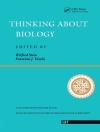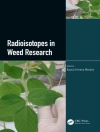Analysis of plant diversity aims to understand the organization and the variability of biological populations within ecosystems. In classical analysis, individual plants are firstly identified on the basis of morphological/cytological parameters, then biodiversity is evaluated tacking into account presences/absences, abundances and densities of plants. Although morphological parameters are easily accessible, they provide limited precision on the differentiation between individuals that share a high similarity. This is especially true in the plant world where a same species includes several varieties that could not be easily distinguished morphologically. Cytological parameters provide reliable qualitative information but are not handy for a quantitative evaluation of biodiversity at the large ecosystemic scales. The high variability between and within plant taxa can be highlighted chemically through qualitative and quantitative analyses of their secondary metabolite patterns. Quantitatively, the variability between different chemical patterns can be defined by different occurring metabolites which fluctuate between major and minor levels. In the case where two chemical patterns have the same metabolites, they can be distinguished from different relative levels (i.e. regulation ratios) of such metabolites. Beyond metabolic patterns based on regulation ratios between metabolites, the different plant taxa can be classified according to different metabolic pathways characterized by different oxidation degrees or by specializations in some chemical substitutions. These different variability criteria (occurrence/absence, major/minor, relative levels, substitution pathways) allow to extract reliable chemical fingerprints for chemotaxonomical classification of plants. Moreover, such a chemical polymorphism can be correlated to different intrinsic and/or extrinsic conditions of the plants in order to evaluate its adaptative, selective and/or evolutive values. Finally, relationships between chemical patterns and environmental conditions provide efficient tools to survey qualitatively and quantitatively the fluctuations of plant diversity in time and space. This book provides illustrations on different chemotaxonomical criteria helping to understand complex structures of plant diversity. It focuses particularly on the chemotaxonomic usefulness of phenolic compounds (phenylpropanoids, flavonoids, etc.) and sesquiterpenes in analysis of plant chemical polymorphisms at different systematic levels (from family to variety and chemotype via genus and species). The phenolic compound-based chemotaxonomy is presented for five plant families including two monocotyledons (Poaceae and Liliaceae), and three dicotyledons (Asteraceae, Lamiaceae and Fabaceae). The sesquiterpenes and more particularly the sesquiterpene lactones (STLs) provide rich illustrations on the chemical variability within the family Asteraceae known to be very productive of such compounds. The five plant families are representative of a great biomass part in the grasslands, and their chemotaxonomic analyses can usefully help to manage the biodiversity in such ecosystems.
Nabil Semmar
Chemotaxonomical Analyses of Herbaceous Plants Based on Phenolic and Terpenic Patterns Flexible Tools to Survey Biodiversity in Grasslands [PDF ebook]
Chemotaxonomical Analyses of Herbaceous Plants Based on Phenolic and Terpenic Patterns Flexible Tools to Survey Biodiversity in Grasslands [PDF ebook]
Dieses Ebook kaufen – und ein weitere GRATIS erhalten!
Format PDF ● Seiten 265 ● ISBN 9781536111187 ● Herausgeber Nabil Semmar ● Verlag Nova Science Publishers ● Erscheinungsjahr 2017 ● herunterladbar 3 mal ● Währung EUR ● ID 7216479 ● Kopierschutz Adobe DRM
erfordert DRM-fähige Lesetechnologie












